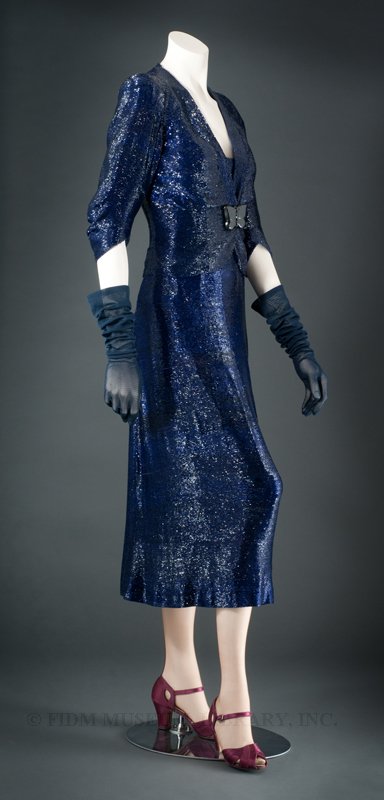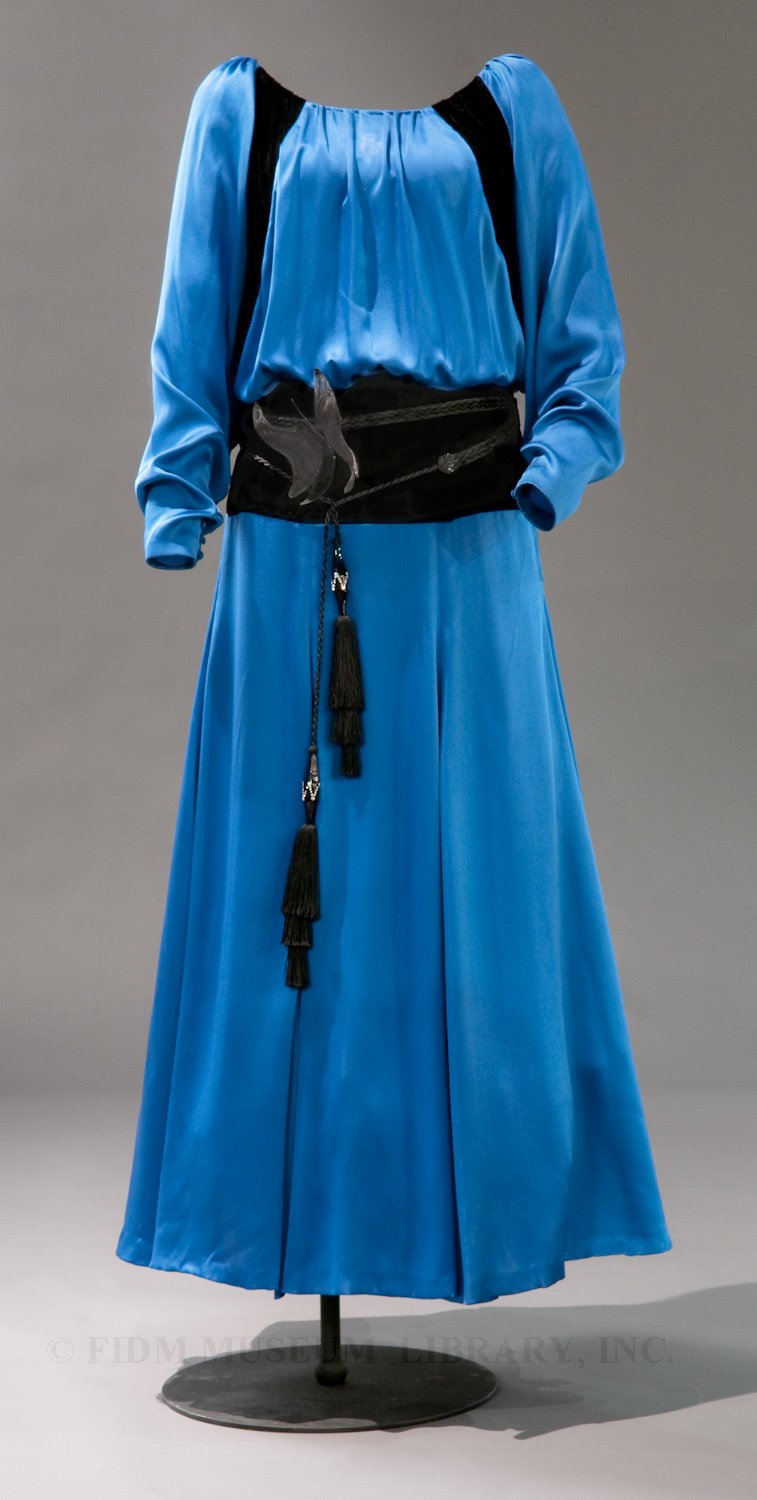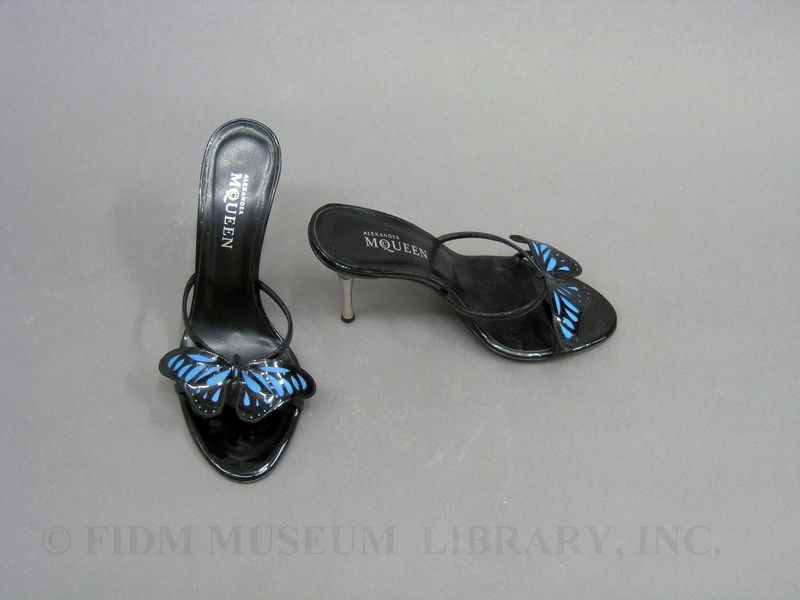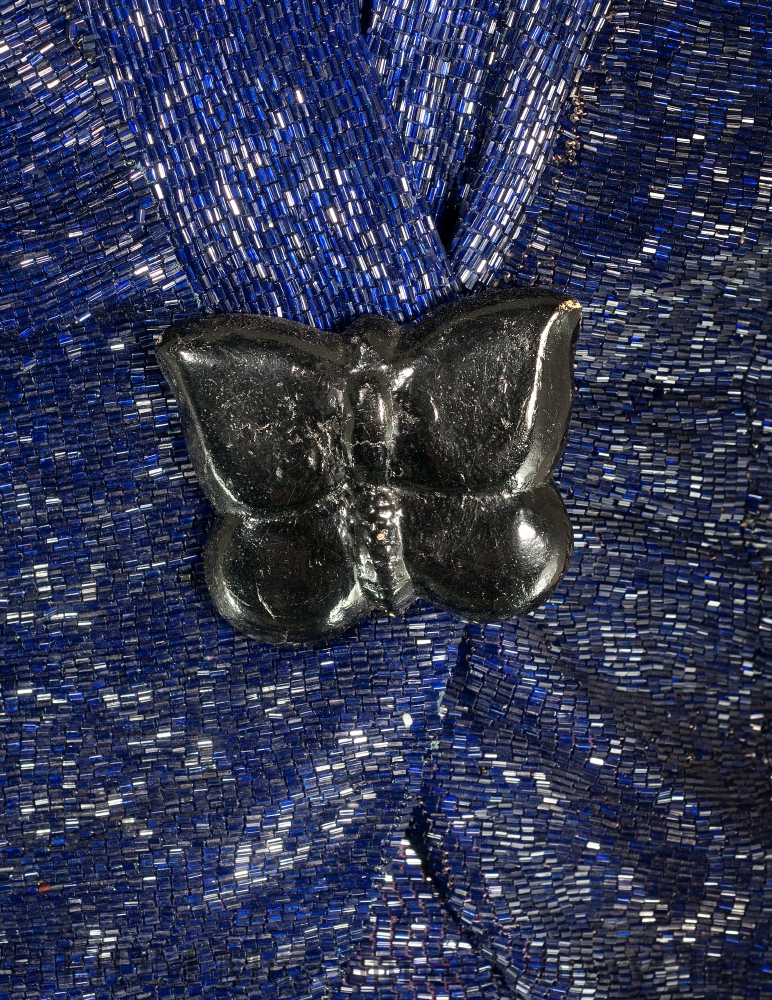Butterflies By Night
While butterflies often symbolize springtime, lightness, and new beginnings, these pieces in the FIDM Museum collection refashion them as creatures of the night, equally at home in the darkness of winter.

Evening Suit
Elsa Schiaparelli, Paris
Fall/Winter 1938-39
Gift of Elizabeth Galindo
2010.886.1AB
Elsa Schiaparelli's (1890-1973) Summer 1937 collection featured a panoply of butterflies: they alighted on hats, formed rainbow-hued prints, and enlivened embroidery. In this ensemble from the following year, a butterfly morphs into one of the designer's trademark sculptural jacket fasteners.
Schiaparelli drew on a wide circle of artistic friends for inspiration and assistance. This carved and painted black butterfly was likely created by one of her well-known sculptor-collaborators, such as Jean Clément, Roger Jean-Pierre, or François Hugo. The ornament's lighter-than-air appearance belies the heaviness of ensemble, which is entirely hand-embroidered with thousands of ink-blue glass bugle beads; together, the dress and jacket weigh more than eight pounds.
 Evening Gown
Evening Gown
Marc Bohan for Christian Dior, Paris
Fall/Winter 1982-83
Gift of Mrs. Alfred Bloomingdale
2006.116.6AB
 Croquis
CroquisFall/Winter 1982-83
Gift of Mrs. Alfred Bloomingdale
Special Collections
SC2006.116.88
 Mules
Mules
Alexander McQueen
c. 2004
Museum Purchase
2005.5.112A
For Alexander McQueen (1969-2010), butterflies were not emblems of sweetness and light, but reminders of the taxidermist and the entomologist's specimen case. His fascination with the natural world encompassed its danger, death, and decay. While these mules may appear playful at first glance, the metal-tipped spike heel threatens to sting like a bee. This butterfly may be the legendary blue morpho, an iridescent blue-green butterfly native to Central and South America. Like many creatures, it is losing its native habitat to deforestation--a reference consistent with McQueen's dark aesthetic.
